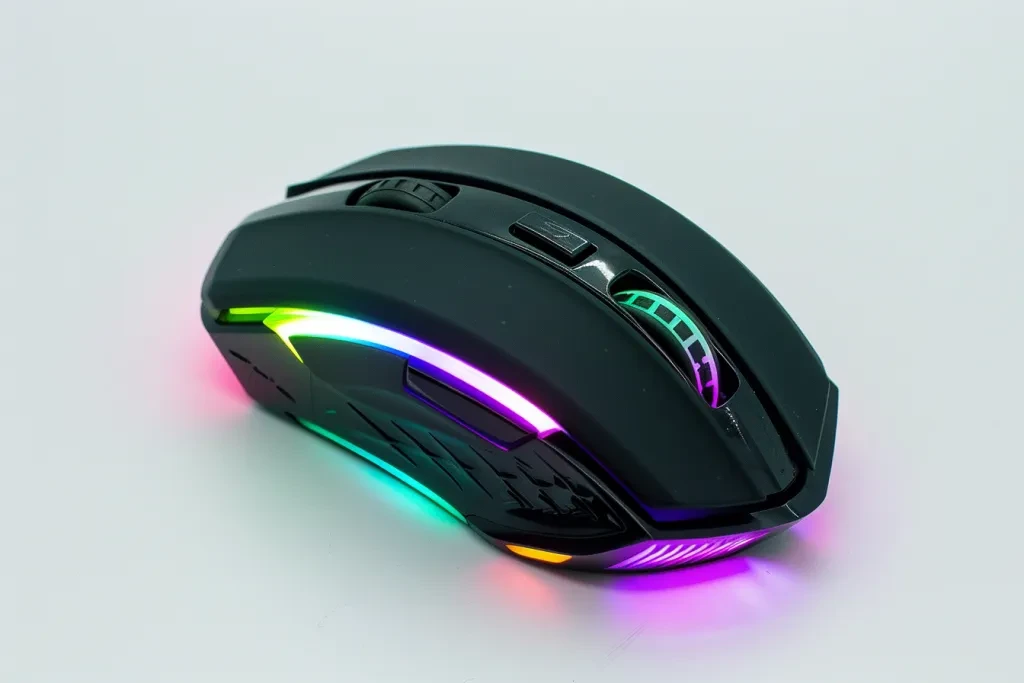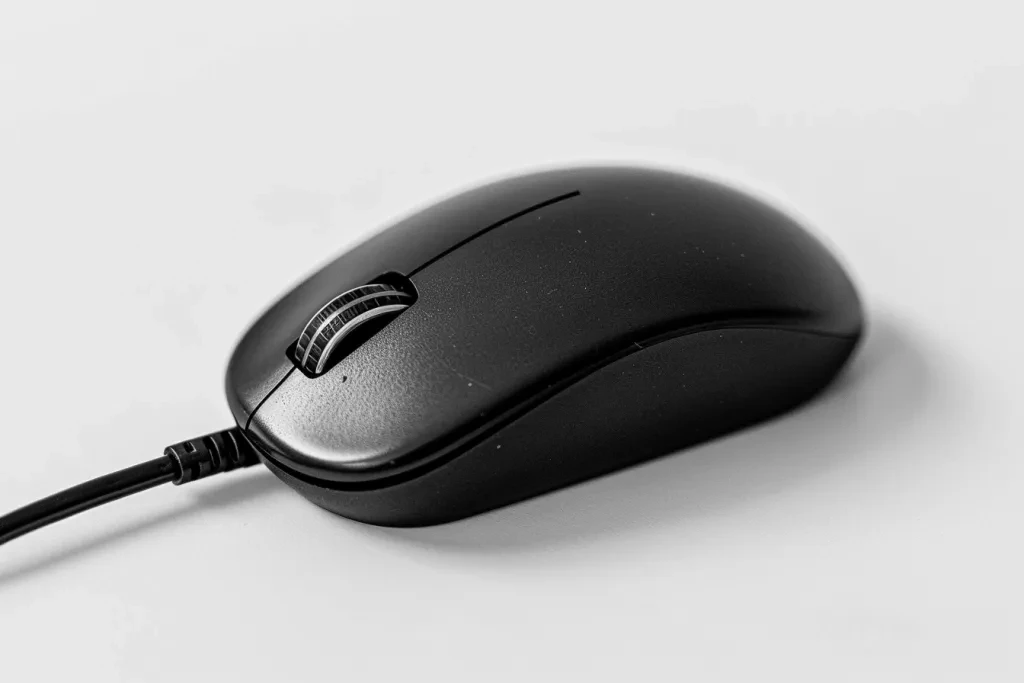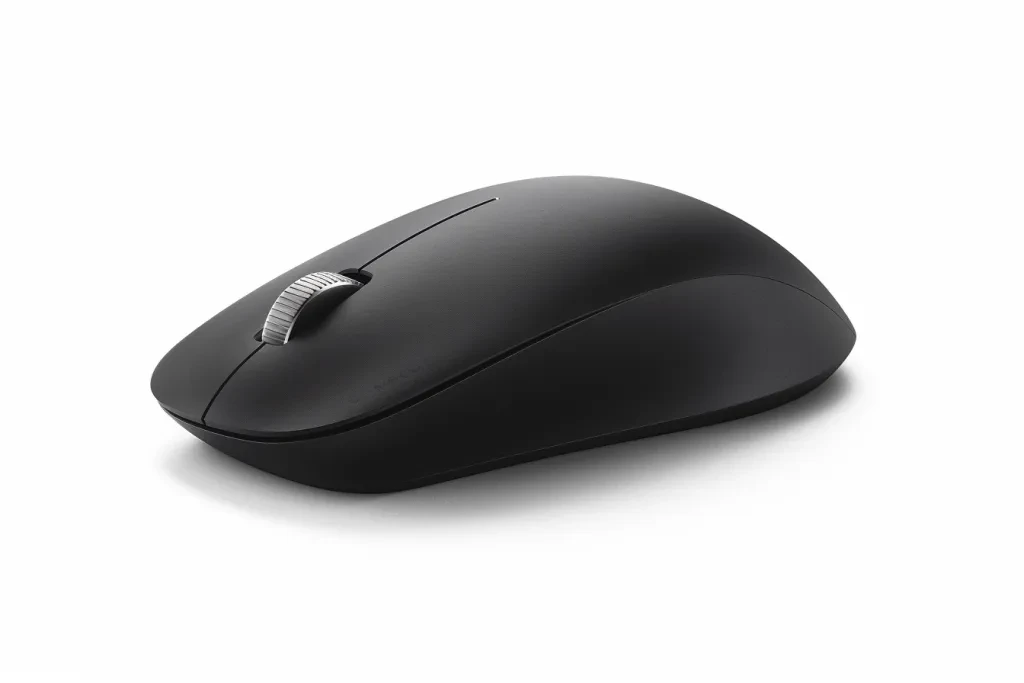In 2025, the computer mouse industry is poised for remarkable growth, driven by trends like AI integration and ergonomic designs. This article provides an in-depth analysis of factors influencing mouse selection, offering valuable insights for professional buyers to make informed decisions. Discover the key aspects of performance, comfort, connectivity, and more to ensure optimal product choices for business needs.
Table of Contents:
– Market Overview: Computer Mouse Industry
– In-Depth Market Analysis: Key Performance and Innovations
– Key Factors When Selecting a Computer Mouse
– Conclusion
Market Overview: Computer Mouse Industry

The global computer mouse market has shown significant growth in recent years. In 2024, the market size is projected to reach $2.8 billion, up from $2.61 billion in 2023, with a compound annual growth rate (CAGR) of 7.2%. This growth is driven by the increasing number of video gamers, higher demand for smart computing devices like PCs and laptops, and a rise in the millennial population. Additionally, higher disposable incomes have contributed to the market’s upward trend.
The mouse market is expected to continue its robust growth, reaching $3.64 billion by 2028 at a CAGR of 6.8%. Factors such as the ongoing trend of remote working, increased employment in the IT sector, and a growing demand for ergonomic mice will drive this growth. Urbanization and greater internet penetration also play significant roles. Major trends include eco-friendly and voice-enabled mice, ergonomic designs, product innovations, advanced gaming mice, and the introduction of biometric mice.
Regionally, Asia-Pacific was the largest market for computer mice in 2023 and is predicted to be the fastest-growing region during the forecast period. The comprehensive market report covers regions like North America, Europe, South America, the Middle East, and Africa, with key players including the USA, China, India, and Germany.
In-Depth Market Analysis: Key Performance and Innovations

The computer mouse market is influenced by performance benchmarks, market share dynamics, and consumer behavior shifts. Precision and responsiveness are critical performance benchmarks, especially for gaming and professional use. For example, Razer’s Basilisk V3 Pro, with its Focus Pro 30K Optical Sensor and Optical Mouse Switches Gen-3, sets new industry standards.
Major companies like Logitech, Microsoft, HP, and Razer dominate the market, continuously innovating to maintain their positions. Targus’ launch of the ErgoFlip and ErgoSmart mice, made from up to 85% post-consumer recycled plastic, highlights the shift towards sustainability.
Economic factors, such as rising disposable incomes and the growing IT sector, significantly impact consumer behavior. Consumers are increasingly opting for high-performance and ergonomic mice, reflecting a shift towards quality and comfort. Seasonal demand patterns, such as back-to-school season and major shopping holidays like Black Friday, also influence sales.
Distribution channels have evolved, with online stores becoming more popular due to their convenience and wide range of options. However, offline channels like supermarkets and direct stores still hold a significant share, especially for consumers who prefer to test products before purchase.
Recent market innovations include eco-friendly mice like Targus’ ErgoFlip EcoSmart Mouse and biometric mice offering enhanced security features. The product lifecycle stages in the mouse market typically include introduction, growth, maturity, and decline, with most high-tech mice currently in the growth or maturity stages.
Digitalization has boosted the market, with companies leveraging online platforms for marketing and sales. Social trends show growing awareness of ergonomic designs and the importance of reducing repetitive strain injuries, leading to increased demand for ergonomically designed mice.
Environmental regulations are shaping the market, with manufacturers focusing on sustainable materials and energy-efficient designs. Customer pain points, such as discomfort from prolonged use and the need for higher precision, are being addressed through continuous product innovation and improvements.
Brand positioning strategies vary, with premium brands like Razer and Logitech focusing on high-performance and gaming mice, while others like Targus emphasize sustainability and ergonomic design. Differentiation strategies involve unique features such as customizable buttons, advanced sensors, and wireless technology, catering to niche markets like gaming and professional use.
Key Factors When Selecting a Computer Mouse

Performance and Sensitivity
One of the most critical factors when selecting a computer mouse is its performance and sensitivity. The performance of a mouse is primarily gauged by its DPI (dots per inch) rating. A higher DPI means the mouse is more sensitive and capable of detecting smaller movements, which is essential for tasks requiring high precision, such as graphic design or gaming. A standard mouse may have a DPI range of 800 to 1600, while gaming mice can go up to 25,000 DPI, allowing for extreme precision in fast-paced games.
The polling rate of a mouse, measured in Hz, is another performance metric to consider. This rate indicates how often the mouse reports its position to the computer. A higher polling rate, such as 1000 Hz, means the mouse updates its position more frequently, resulting in smoother and more responsive cursor movements. This is particularly beneficial in competitive gaming where every millisecond counts.
The type of sensor used in the mouse also affects its performance. Optical sensors are common and work well on most surfaces, while laser sensors offer higher sensitivity and can work on a wider variety of surfaces, including glass. However, laser sensors can sometimes be too sensitive and may cause jittery cursor movements.
Ergonomics and Comfort
Ergonomics and comfort are vital considerations, especially for users who spend long hours using a computer mouse. An ergonomic mouse is designed to fit the natural shape of your hand, reducing strain and preventing conditions like carpal tunnel syndrome. There are various ergonomic designs available, such as vertical mice, which position the hand in a handshake posture, reducing wrist strain.
The size and shape of the mouse should match the user’s hand size and grip style. Common grip styles include palm, claw, and fingertip grips. A palm grip mouse is typically larger and supports the entire hand, while a claw grip mouse is smaller and allows for more precise control with the fingertips. Fingertip grip mice are even smaller and lighter, offering quick and agile movements.
Materials and surface texture also play a role in comfort. A mouse with a soft-touch coating or rubberized grips can provide a more secure and comfortable hold, especially during extended use. Some mice also feature customizable weights, allowing users to adjust the mouse’s weight to their preference for optimal control and comfort.
Connectivity Options
Connectivity options are another crucial aspect when selecting a computer mouse. Mice can be either wired or wireless, each with its advantages and disadvantages. Wired mice offer a stable and lag-free connection, making them ideal for gaming and tasks requiring high precision. They also do not require batteries, eliminating the need for regular replacements or recharging.
Wireless mice offer greater flexibility and portability. They can connect to the computer via Bluetooth or a USB receiver. Bluetooth mice are convenient as they do not occupy a USB port and can connect to multiple devices, making them ideal for use with laptops and tablets. However, they may experience occasional latency issues compared to wired mice.
Some advanced wireless mice come with dual connectivity options, allowing users to switch between Bluetooth and a USB receiver, providing the best of both worlds. Battery life is also an important consideration for wireless mice. Look for models with long battery life or rechargeable batteries to minimize downtime.
Customization and Programmability
Customization and programmability are essential features for users who require specific functions from their mouse. Many high-end mice come with programmable buttons that can be customized to perform various actions, such as opening applications, executing macros, or navigating through documents. This can greatly enhance productivity and efficiency, especially for power users and gamers.
Software support is crucial for customization. Manufacturers often provide software that allows users to configure button assignments, adjust DPI settings, and create profiles for different applications or games. Some software also offers advanced features like surface tuning, which optimizes the mouse sensor for different surfaces to ensure consistent performance.
RGB lighting is another customizable feature that, while not essential, can add a personal touch to the mouse. Users can choose from a wide range of colors and lighting effects to match their setup or preferences. Some mice also allow synchronization with other RGB-enabled devices, creating a cohesive and visually appealing setup.
Price and Budget
Price and budget are always important factors when selecting a computer mouse. The price range for mice can vary significantly, from budget models costing as little as $10 to high-end gaming mice priced over $150. It’s essential to balance cost with the features and performance you need.
Budget mice often provide basic functionality and may lack advanced features like high DPI settings, programmable buttons, or ergonomic designs. However, they can be perfectly adequate for general use or as a backup mouse. Mid-range mice, priced between $30 and $70, typically offer a good balance of performance, comfort, and additional features, making them suitable for most users.
High-end mice, while more expensive, come with premium features such as ultra-high DPI sensors, extensive customization options, and superior build quality. These mice are ideal for professional gamers, graphic designers, and other users who demand the best performance and reliability from their peripherals.
Compatibility with Other Devices and Systems
Compatibility with other devices and systems is a critical consideration when choosing a computer mouse. Modern mice are designed to work across various platforms, including Windows, macOS, and Linux. Ensuring the mouse is compatible with your operating system is essential to avoid functionality issues.
For users who switch between multiple devices, a multi-device mouse can be highly beneficial. These mice can connect to several devices simultaneously and allow users to switch between them with the press of a button. This feature is particularly useful for professionals who use a desktop, laptop, and tablet in their workflow.
Additionally, some mice offer compatibility with specialized software and hardware. For instance, a gaming mouse may come with software that requires specific system requirements or hardware configurations. Checking these compatibility details beforehand can prevent potential issues and ensure seamless integration with your existing setup.
Durability and Build Quality
Durability and build quality are essential factors that impact the longevity and reliability of a computer mouse. A well-built mouse should withstand daily wear and tear, including frequent clicks, movements, and potential drops.
High-quality materials, such as durable plastics, metal components, and reinforced cables, contribute to a mouse’s overall durability. Some mice are rated for a specific number of clicks, such as 50 million clicks, indicating their longevity. This rating can be a useful indicator of the mouse’s durability, especially for users who engage in intensive tasks like gaming or graphic design.
Water and dust resistance can also enhance a mouse’s durability. Some models come with an IP rating, indicating their level of protection against water and dust ingress. For users in environments where spills or dust are common, a mouse with a higher IP rating can provide added peace of mind.
Customer Support and Warranty
Customer support and warranty are important considerations when purchasing a computer mouse. A reliable warranty can protect your investment and provide peace of mind in case of defects or issues. Most manufacturers offer a standard one-year warranty, while some high-end models come with extended warranties of up to three years.
Good customer support is essential for resolving any issues that may arise with the mouse. Look for manufacturers with a reputation for responsive and helpful customer service. Access to online resources, such as FAQs, user manuals, and troubleshooting guides, can also be beneficial for resolving minor issues without the need for direct support.
Additionally, consider the return and refund policy of the retailer or manufacturer. A flexible return policy allows you to return or exchange the mouse if it does not meet your expectations or if you encounter any problems. This can provide added assurance and make the purchasing process smoother.
Packaging and Initial Setup
Packaging and initial setup are often overlooked but can significantly impact the overall user experience. High-quality packaging protects the mouse during transit and provides a good first impression. Look for packaging that includes all necessary accessories, such as USB receivers, charging cables, and user manuals.
The initial setup process should be straightforward and user-friendly. Plug-and-play mice require minimal setup and can be used immediately after connecting to the computer. Mice with advanced features may require software installation or driver updates. Clear and concise instructions can help streamline the setup process and ensure that all features are correctly configured.
Some manufacturers offer additional resources, such as online setup guides or video tutorials, to assist users with the initial setup. These resources can be particularly helpful for users who are new to advanced peripherals or customization software.
The Future of Computer Mouse Technology
The future of computer mouse technology is poised to bring exciting advancements and innovations. One emerging trend is the integration of artificial intelligence (AI) and machine learning into mice. AI-powered mice can learn and adapt to users’ behaviors, optimizing performance and providing personalized experiences. For example, an AI-enabled mouse can adjust its sensitivity based on the user’s hand movements or the type of task being performed.
Another promising development is the use of advanced sensors and tracking technologies. Future mice may utilize sensors that provide even higher precision and accuracy, such as optical sensors with higher DPI ratings or new types of sensors that can track movements on any surface. These advancements can enhance the performance and versatility of computer mice, making them suitable for a wider range of applications.
Wireless charging is also expected to become more prevalent in the future. Current wireless mice often require periodic battery replacements or recharging via cables. Wireless charging technology, such as Qi charging, can eliminate the need for cables and provide a more convenient and seamless charging experience. Some manufacturers are already exploring the integration of wireless charging pads into mouse pads, allowing for continuous charging while the mouse is in use.
Different Styles of Computer Mice
Computer mice come in various styles, each designed to cater to specific needs and preferences. Understanding the different styles can help you choose the right mouse for your requirements.
Gaming Mice
Gaming mice are designed to provide high performance and precision for gamers. These mice often feature high DPI sensors, customizable buttons, and ergonomic designs to enhance the gaming experience. Gaming mice can be further categorized into different types, such as FPS (first-person shooter) mice, MMO (massively multiplayer online) mice, and MOBA (multiplayer online battle arena) mice, each tailored to the specific demands of these game genres.
FPS mice typically have a higher DPI range and a lightweight design for quick and precise movements. They may also include features like sniper buttons, which temporarily reduce DPI for more accurate aiming. MMO mice, on the other hand, come with multiple programmable buttons to accommodate the numerous commands and macros used in these games. MOBA mice often strike a balance between the two, providing both precision and customization options.
Ergonomic Mice
Ergonomic mice are designed to reduce strain and discomfort during prolonged use. These mice come in various shapes and sizes to accommodate different hand sizes and grip styles. Common ergonomic designs include vertical mice, which position the hand in a natural handshake posture, and trackball mice, which eliminate the need for extensive wrist movements.
Vertical mice can help reduce wrist strain and prevent conditions like carpal tunnel syndrome. Trackball mice, on the other hand, allow users to control the cursor by rotating a ball with their fingers, minimizing wrist movement. Some ergonomic mice also feature adjustable angles and customizable buttons to further enhance comfort and usability.
Travel Mice
Travel mice are compact and portable, making them ideal for users on the go. These mice are typically wireless and feature a small form factor that easily fits into a laptop bag or pocket. Despite their small size, travel mice can still offer good performance and functionality, with features like adjustable DPI settings and Bluetooth connectivity.
Some travel mice also come with innovative designs, such as foldable or retractable models, to save space and enhance portability. Battery life is an important consideration for travel mice, as users may not have easy access to charging options while on the go. Look for models with long battery life or rechargeable batteries to ensure uninterrupted use.
Office Mice
Office mice are designed for everyday productivity tasks, offering a balance of comfort, performance, and functionality. These mice often feature ergonomic designs, customizable buttons, and smooth scrolling mechanisms to enhance productivity. Office mice can be either wired or wireless, depending on user preference and workspace setup.
Some office mice also include advanced features like gesture controls, which allow users to perform specific actions, such as switching between applications or zooming in on documents, with simple hand movements. Quiet-click buttons can be beneficial in shared or open office environments, reducing noise and minimizing distractions.
Conclusion
In summary, selecting the right computer mouse involves considering various factors such as performance, ergonomics, connectivity, customization, and price. Each user has unique needs and preferences, so it’s essential to evaluate these factors carefully to find the mouse that best suits your requirements. By understanding the different styles and features available, you can make an informed decision and enhance your overall computing experience.



